Imagine stepping into your garden and being enveloped by a symphony of delightful scents, each one more enchanting than the last. An aromatic garden is not just a feast for the senses but a sanctuary where tranquility and nature coalesce, offering both beginner and seasoned gardeners a rewarding experience. For those just starting their gardening journey, the idea of cultivating such a space might seem daunting, but fear not—it’s more achievable than you might think. Experienced gardeners, on the other hand, will relish the opportunity to experiment and refine their sensory oasis, enhancing their existing knowledge with new aromatic treasures.
The importance of an aromatic garden extends beyond mere olfactory pleasure; it plays a pivotal role in creating a holistic outdoor environment. Fragrant plants can deter pests, attract beneficial pollinators, and even influence mood and wellbeing, making them a vital component of any garden. In this article, you’ll discover how to select the right combination of plants to create a harmonious blend of fragrances that suits your personal tastes and local climate. You’ll also learn practical tips for planting, maintaining, and maximizing the aromatic potential of your garden, ensuring it remains a source of joy and relaxation throughout the seasons.
By the end of your aromatic garden journey, you’ll have not only crafted a delightful sensory experience but also gained a deeper appreciation for the intricate interplay between plants and their environment. Whether you’re looking to add a few fragrant herbs to your patio or transform your entire backyard into a fragrant haven, this guide will offer actionable insights and encouragement. Let’s embark on this aromatic adventure together, cultivating a garden that delights the senses and enriches the soul.
Select Fragrant Plant Varieties
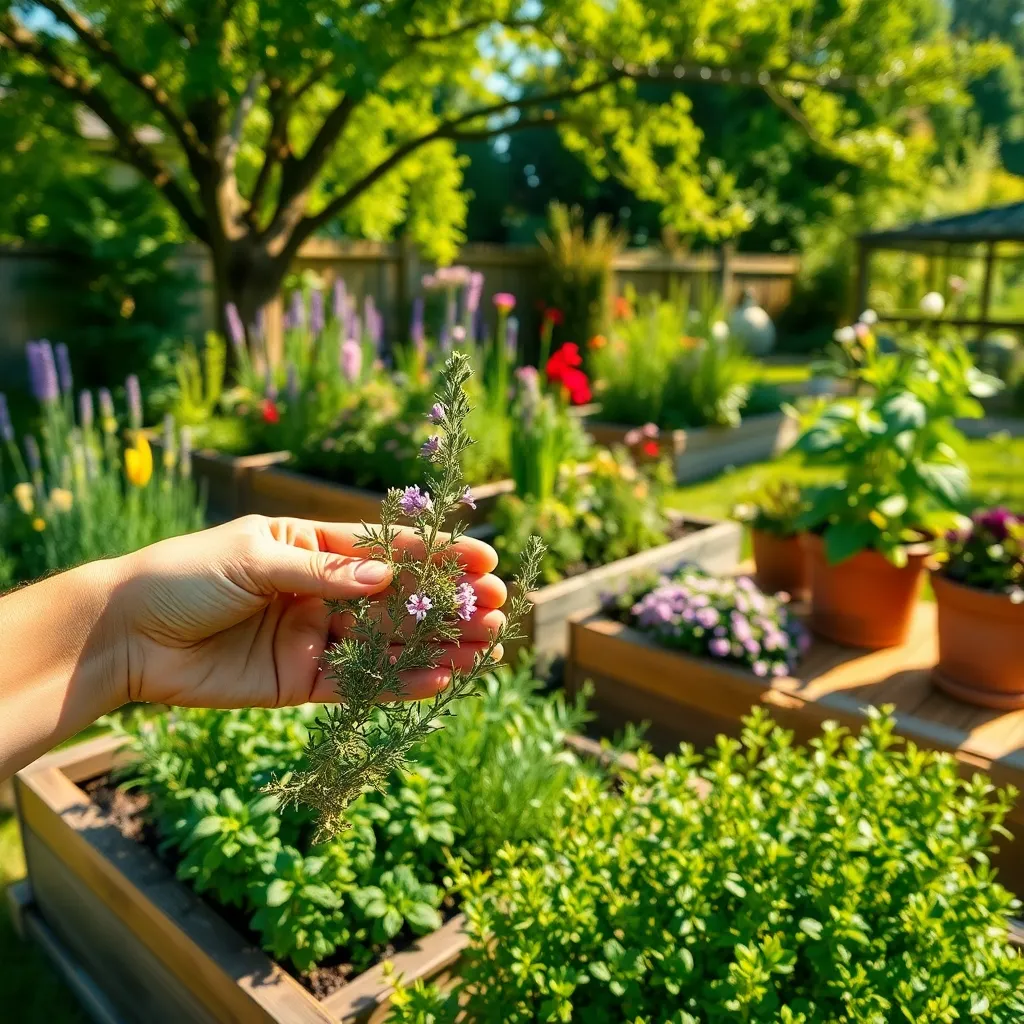
When selecting fragrant plant varieties, consider starting with classics like lavender and roses, which are known for their delightful aromas and visual appeal. Both plants thrive in well-drained soil and need at least six hours of sunlight daily, making them perfect for sunny garden spots.
Gardenias offer a rich, sweet fragrance but require specific care to flourish. They prefer acidic soil and consistent moisture, so regular watering and mulching are essential to maintain the right conditions.
For those interested in herbs, consider planting mint or basil, as both add culinary value and a refreshing scent to your garden. These herbs are easy to grow in pots or directly in the garden, requiring moderate watering and partial to full sun exposure.
Experienced gardeners might enjoy experimenting with night-blooming jasmine, a plant that releases its intoxicating fragrance after sunset. Ensure this plant is placed in a sheltered area to protect it from strong winds, and prune regularly to encourage bushy growth and more blooms.
Prepare Well-Draining Soil
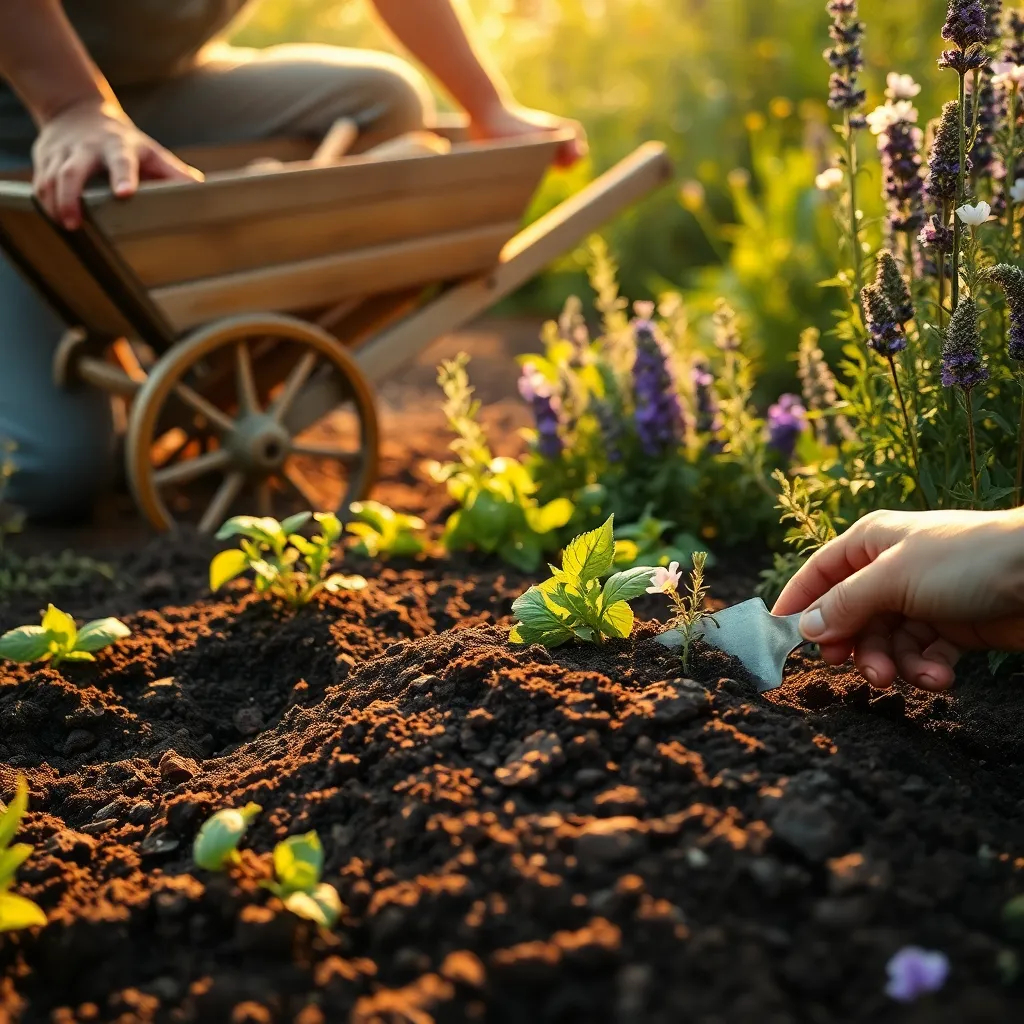
Creating well-draining soil is essential for an aromatic garden, as it helps prevent root rot and promotes healthy plant growth. Start by assessing your garden’s current soil type, which can often be determined by texture and drainage characteristics.
Adding organic matter such as compost, peat moss, or well-rotted manure can greatly enhance drainage. These materials improve soil structure by increasing its ability to hold nutrients while allowing excess water to seep through.
For those dealing with clay-heavy soils, consider incorporating sand or fine gravel to improve drainage. Mix these amendments thoroughly into the top 12 inches of soil to ensure even distribution and effectiveness.
Another effective strategy is to create raised beds, which naturally facilitate better drainage. Raised beds also provide the flexibility to customize soil mixtures, making them ideal for growing a diverse range of aromatic plants.
Design a Scent-Focused Layout
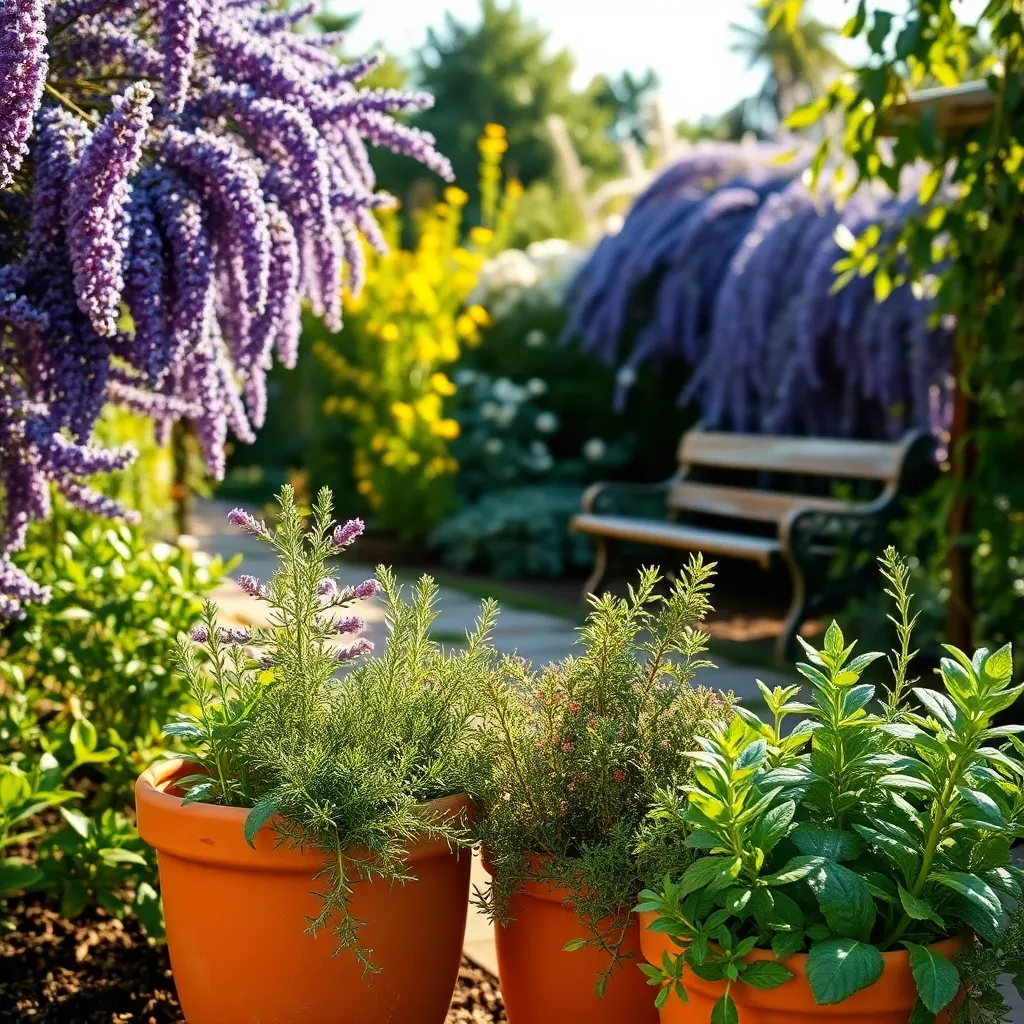
To design a scent-focused layout in your aromatic garden, start by identifying the types of fragrances you enjoy most. Consider grouping plants by scents such as citrus, herbal, or floral to create distinct aromatic zones within your garden.
Position fragrant plants near walkways and seating areas to maximize their impact, ensuring that their scents can be savored up close. Choose plants that release their fragrance at different times of the day, like morning-blooming honeysuckle and evening-scented jasmine, to create a dynamic and ever-changing sensory experience.
Incorporate both low-growing and taller plants to add depth and layers to your scent-focused design. Use taller plants like lilacs or gardenias as backdrops, while smaller, ground-covering herbs such as thyme and oregano can fill in the foreground with their delightful aromas.
Ensure adequate spacing between each plant to allow for air circulation, which helps disperse their fragrance more effectively. It’s also crucial to provide well-draining soil and appropriate light conditions to maintain plant health and maximize their scent production.
For those looking to add a bit of sophistication, consider planting scented climbers like clematis or sweet peas on trellises to introduce vertical interest. This not only enhances the visual appeal but also helps distribute their enchanting scents throughout different layers of your garden.
Plant in Sunlit Locations
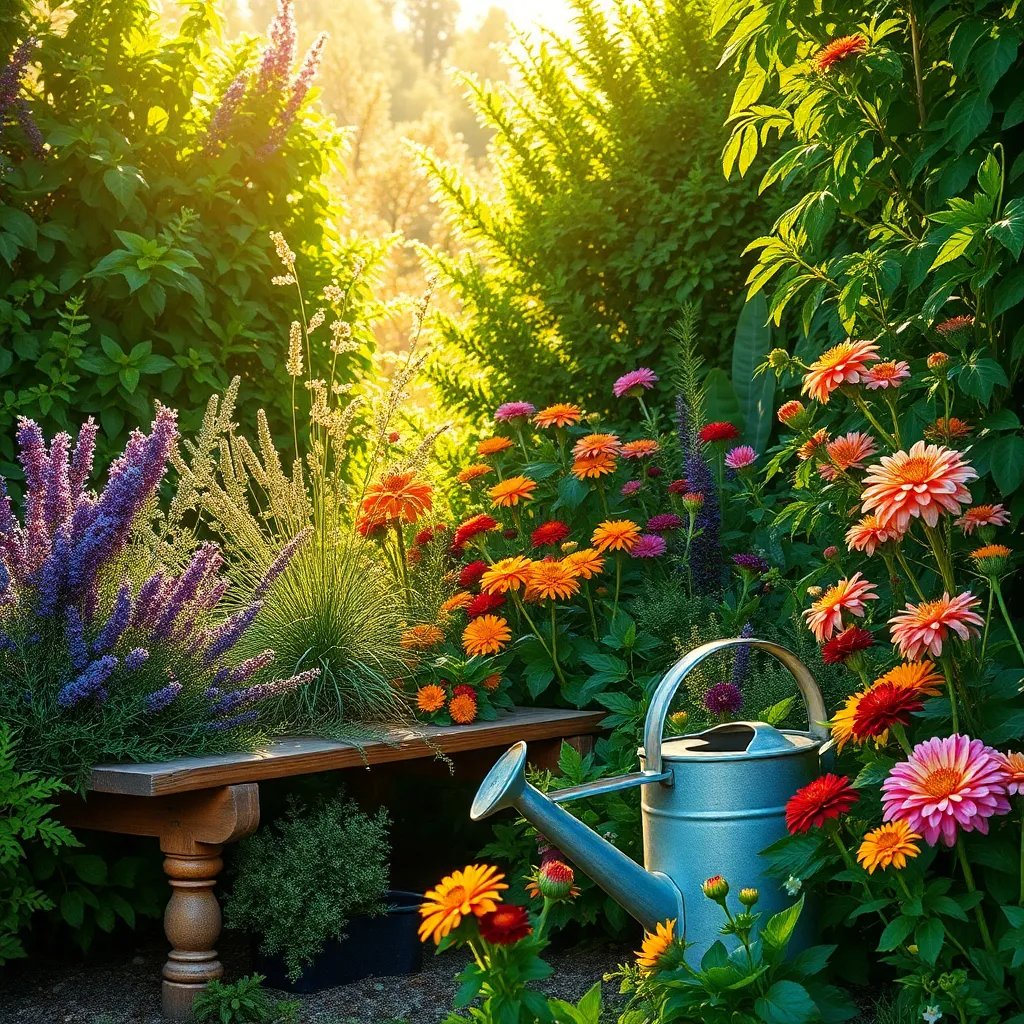
To harness the full potential of your aromatic garden, choose plants that thrive in sunlit locations. Lavender, rosemary, and sage are excellent choices, as they love basking in full sun and reward you with fragrant blooms and foliage.
Begin by ensuring your soil is well-drained; these herbs prefer sandy or loamy soil types that do not retain excess moisture. Amend your soil with some gritty sand or perlite to improve drainage, especially if your garden soil is clay-heavy.
Consider the watering needs of your sun-loving plants, which generally require less frequent watering than those in shadier areas. Water deeply once or twice a week, allowing the soil to dry out between waterings to prevent root rot and encourage deep root growth.
For those seeking a more advanced approach, consider companion planting to enhance growth and fragrance. Interplanting marigolds can deter pests, while pairing with thyme can enhance the essential oil production in lavender and rosemary.
Maintain Regular Pruning and Care
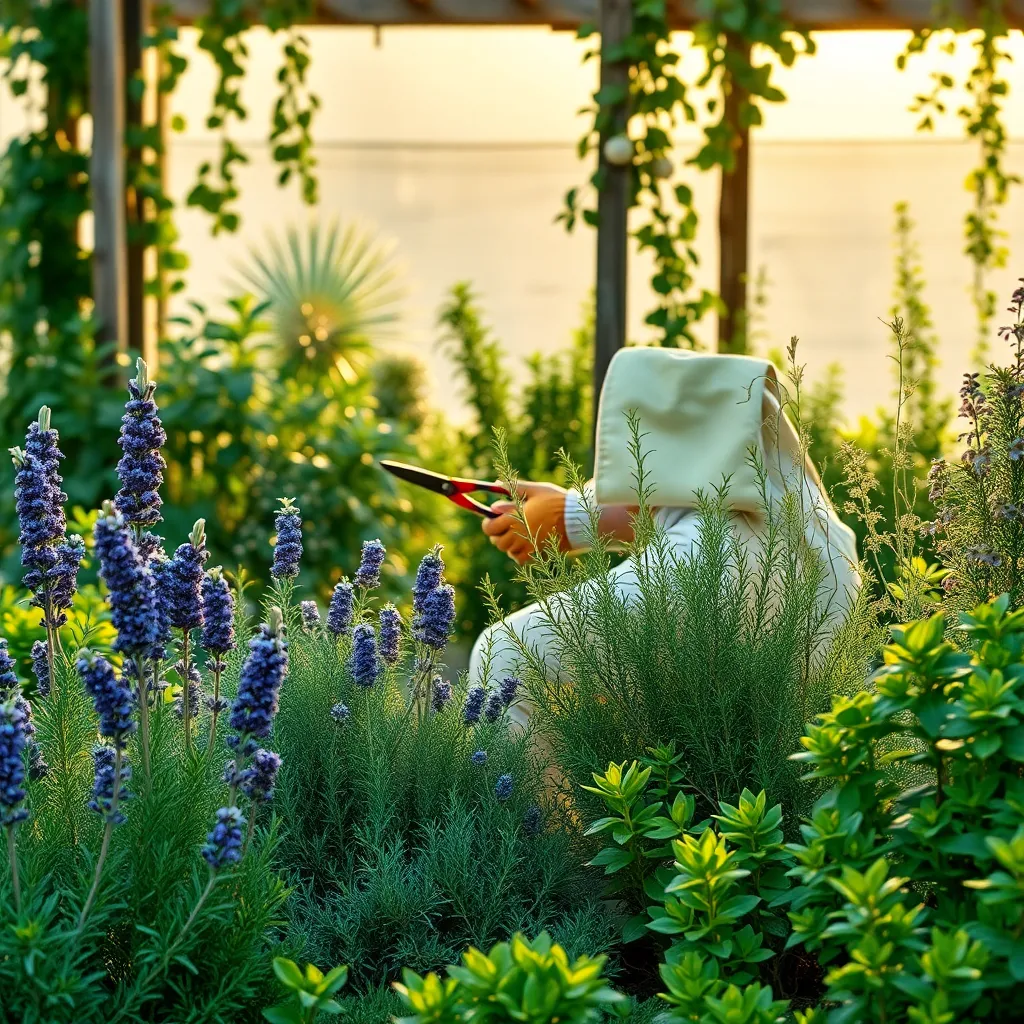
Regular pruning is essential to maintain the health and productivity of your aromatic garden. By removing dead or diseased parts of your plants, you encourage new growth and improve air circulation.
Start by identifying the specific needs of each plant in your garden, as some, like lavender, thrive on light pruning, while others, like rosemary, benefit from a more substantial trim. Use clean, sharp pruning shears to make cuts at a 45-degree angle, which helps prevent water damage and disease entry.
Timing is crucial when it comes to effective pruning. For most aromatic herbs, such as thyme and sage, it’s best to prune in the early spring before new growth begins or after the plant has bloomed.
To maximize your garden’s aromatic potential, consider deadheading flowers regularly, which promotes continuous blooming throughout the growing season. In addition, frequent pruning of herbs like basil not only keeps the plant bushy but also enhances the flavor of the leaves.
- Tip 1: Always disinfect your tools between plants to avoid spreading pests and diseases.
- Tip 2: Use the pruned material for culinary purposes or as fragrant sachets to make the most of your trimmings.
Conclusion: Growing Success with These Plants
Creating an aromatic garden is much like nurturing a thriving relationship: both require attention, understanding, and a touch of creativity. Throughout this article, we explored five key concepts: the importance of communication (choosing the right plants for your environment), the value of quality time (dedicating moments to tend to your garden), the role of compromise (balancing different scents), the necessity of adaptability (adjusting to changing seasons), and the power of patience (allowing time for growth). As you embark on your aromatic journey, start by selecting a single plant that speaks to you and begin tending to it with care and curiosity.
To solidify the nurturing habits you’ve learned, save this article as a handy reference. Relationships, much like gardens, are ever-evolving. By keeping these insights at your fingertips, you ensure that you’ll always have a guide to return to as your relationship blossoms.
Remember, the seeds you plant today can lead to a vibrant, aromatic garden tomorrow. Embrace this process with excitement and confidence, knowing that your efforts will lead to a more fulfilling and harmonious relationship. Let this be the beginning of a flourishing journey for both your garden and your connection with others.
